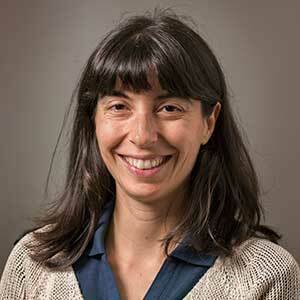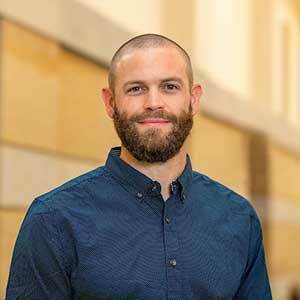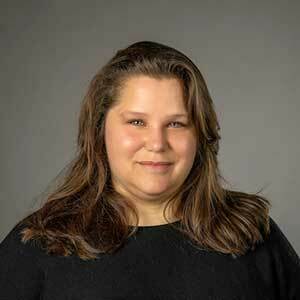Downwind states face disproportionate burden of air pollution
A recent Supreme Court decision to block a federal rule curbing interstate air pollution further complicates efforts to reduce emissions and adds to an already disproportionate burden on “downwind” states, according to researchers at the University of Notre Dame.

“Toxic air pollution is really not as well known by the general public as you would hope, given its impact on human health,” said Paola Crippa, assistant professor in the Department of Civil and Environmental Engineering and Earth Sciences. “Most studies peg it as the, or at least one of the top three, largest causes of early human mortality. It cuts off about three years from global life expectancy. This is especially important for urban communities, where air pollution tends to be the highest.”
Air pollution poses a significant threat to respiratory health, is associated with asthma and can lead to chronic disease, cancer and premature death, according to the National Institutes of Health.
“Each year, air pollution kills 7 to 9 million people worldwide, including 200,000 Americans. And in the United States, much of this toxic pollution crosses state borders,” said Richard Marcantonio, assistant professor of environment, peace and global affairs in the University of Notre Dame’s Keough School of Global Affairs. “The Supreme Court’s decision pressed pause on a plan to help regulate this cross-state pollution.”
The ruling blocked the Environmental Protection Agency’s “Good Neighbor Plan,” housed under the Clean Air Act, which requires “upwind” states to implement improvement plans to reduce ground-level ozone and nitrogen oxide emissions from power plants and other industrial sources. Three states — Indiana, Ohio and West Virginia — along with various large industrial companies and trade organizations sued the EPA after the agency rejected those plans, which it determined to be insufficient, and moved to enforce its own plan. The EPA has stated that nitrogen oxide emissions decreased by 18 percent across 10 states where its plan was enacted in 2023.

Crippa and Marcantonio, with co-authors Danielle Wood, program director of the Notre Dame Global Adaptation Initiative, and Alixandra Underwood at the International Food Policy Research Institute, recently published a study exploring the Clean Air Act in the journal Environmental Management. Their study focuses particularly on Section 126, a measure by which downwind states can take action and petition the EPA to directly regulate sources of interstate air pollution.
The researchers examined all 13 petitions filed through Section 126 by downwind states between 2000 and 2022.
The study showed downwind states face several challenges in using the measure, ultimately rendering it ineffective. Downwind states can petition the EPA to directly regulate sources of air pollution, such as nitrogen oxide, sulfur dioxide and particulate matter, across state lines. However, those states experience lengthy response times, petitions are accepted infrequently and petitioners are required to collect proof showing improvement plans have failed — the kind of internal information from the source facilities that downwind states are not likely to get.
“In order to actually apply the good neighbor rule as it stands today, the burden of proof in court has been placed on the downwind states, and to date, they have been unsuccessful in court,” Crippa said. “If an upwind state is producing pollution that unequally affects a downwind state, they should be able to easily and effectively do something about it — that is the idea behind the federal government supporting federalism amongst the states. Right now, that’s not happening.”

Measuring and attributing air pollution across state lines is a challenge, Crippa said. How a region determines the source or sources contributing to poor air quality comes down to air quality models able to track the wind flow and pollution transport — critical to developing informed air quality assessments. These assessments play a significant role in alerting the public to poor conditions and increasing public awareness.
But, Crippa said, “This information is insufficient when the goal is to develop policies and implementation strategies to reduce local air pollution.” High pollution levels experienced in a local neighborhood may be only partially dictated by nearby emission sources, she said. “We are developing a new way of thinking about air quality management where regulations are not enforced based on political boundaries, but on dynamical physical boundaries that reflect the actual pollution dispersion boundaries.”
Crippa explained that new regulatory boundaries should be defined to include areas experiencing similar air quality conditions, rather than left to political and state boundaries. This type of boundary could ensure that current practices of exporting pollution to neighboring states through energy production and industry are significantly reduced. The research team is currently working on a companion study outlining proposals for air quality management based on these new boundaries.
The Supreme Court’s decision put the plan on hold, leaving the EPA and affected states without an immediate solution.
“It underscores how our regulatory system continues to be hamstrung when attempting to address some of the biggest challenges to its mission: to protect human health and the environment,” Marcantonio said. “Going forward, I hope policymakers will address this issue through an approach that centers human health first and protects the rights of downwind states.”
Crippa, Marcantonio and Wood are all affiliated with Notre Dame's Environmental Change Initiative. The study was conducted with support from the Lucy Family Institute for Data and Society.
Contact: Jessica Sieff, associate director of media relations, 574-631-3933, jsieff@nd.edu
Latest ND NewsWire
- Smarter tools for policymakers: Notre Dame researchers target urban carbon emissions, building by buildingCarbon emissions continue to increase at record levels, fueling climate instability and worsening air quality conditions for billions in cities worldwide. Yet despite global commitments to carbon neutrality, urban policymakers still struggle to implement effective mitigation strategies at the city scale. Now, researchers at Notre Dame’s School of Architecture, the College of Engineering and the Lucy Family Institute for Data & Society are working to reduce carbon emissions through advanced simulations and a novel artificial intelligence-driven tool, EcoSphere.
- Notre Dame Lead Innovation Team partners with local WIC program to identify, prevent lead poisoning in childrenB.A.B.E. store “shoppers” now have something new to help their families: free lead screening kits offered by the University of Notre Dame’s Lead Innovation Team.
- Vatican honors Martin and Carmel Naughton with papal awardThe late Pope Francis, in one of his last acts, conferred the honour of the Order of Saint Gregory the Great upon Carmel and Martin Naughton, Trustee Emeritus of the University of Notre Dame. The papal honor is in recognition of the Naughtons’ outstanding philanthropy in the areas of education and the arts, particularly in the provision of philanthropic support and scholarships to Catholic education at the University of Notre Dame and Kylemore Abbey, and in their transformative contributions to higher education in Ireland.
- Brain tumor growth patterns may help inform patient care managementAssistant Professor Meenal Datta (University of Notre Dame/Wes Evard) A team of researchers from the University of Notre Dame, Harvard Medical School/Massachusetts General Hospital, and Boston University has developed a technique for measuring a brain tumor’s mechanical force and a new model to estimate how much brain tissue a patient has lost.
- Notre Dame elects two new TrusteesTwo new Trustees — John F. Crowley and Danielle Walker Merfeld — have been elected to serve on the University of Notre Dame’s Board of Trustees effective July 1. …
- From reaction to resolution: The future of allergy treatmentTwelve-year-old Lauren Eglite was thrilled to attend a Notre Dame football game with her father, Erik, in 2017, even though her acute peanut allergy demands constant vigilance. She was even more excited when the stadium’s brand-new video board aired an NBC Fighting…












